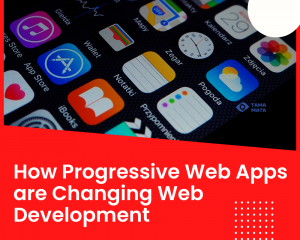What Is Wireframing in Web Design, And Why Do You Need To Know About It?
What Is Wireframing In Web Design? If you’ve been working in the world of web design for a while, then […]
Dec 8, 2022
Aug 9, 2023

The digital landscape has evolved, and static websites are no longer enough to keep users engaged. Interactive websites have emerged as a powerful tool to provide dynamic, captivating experiences that not only attract users but also retain their interest over time. This article delves into the best practices for designing interactive websites that create lasting impressions and enhance user engagement.
Creating interactive websites is an art that involves a thoughtful combination of design, functionality, and user-centered experiences. Below are some key practices to consider when crafting interactive websites:
Design with the user in mind. Understand your target audience’s preferences, behaviors, and needs. Tailor your interactive elements to resonate with their interests, ensuring a more engaging experience.
Ensure intuitive navigation that allows users to explore the website effortlessly. Use clear labels, logical menus, and interactive breadcrumbs to guide users through different sections.
Incorporate interactive visual elements to tell a compelling story. Utilize parallax scrolling, animations, and multimedia to guide users through a narrative that captures their attention.
Design for all devices, from desktops to smartphones and tablets. A responsive design ensures that your interactive elements function smoothly across various screen sizes and resolutions.
Replace static CTAs with interactive ones. Use buttons that change color or shape upon hover, creating a sense of responsiveness that encourages users to take action.
Introduce gamified features like quizzes, challenges, and rewards. Gamification enhances user engagement by adding an element of fun and competition to the website.
Leverage user data to deliver personalized experiences. Show recommendations based on browsing history or provide customizable interfaces to make users feel valued.
Offer immediate feedback for user interactions. Whether it’s a form submission or a button click, provide visual cues to acknowledge user actions.
Incorporate interactive multimedia elements such as videos, infographics, and 3D models. These elements immerse users in the content and encourage exploration.
Integrate social media sharing buttons and live feeds. Encourage users to share their experiences and opinions, fostering a sense of community around your website.
Embracing interactive design principles offers a host of benefits that contribute to a website’s success:
How can I design interactive elements that align with my brand’s identity? Ensure that interactive elements incorporate your brand’s colors, typography, and visual style. Consistency between static and interactive design maintains brand identity.
What tools can I use to create interactive prototypes for websites? Tools like Adobe XD, Figma, and InVision allow you to create interactive prototypes that showcase how users will interact with your website’s features.
Are there any downsides to interactive website design? While interactive elements enhance engagement, overuse or poorly implemented features can lead to clutter and confusion. Balance is key.
Can interactive websites improve user trust and credibility? Absolutely. Providing interactive content that offers value and addresses user needs can establish your website as a credible and trustworthy source.
Are there accessibility considerations for interactive elements? Yes, interactive elements should be designed with accessibility in mind. Provide alternative text for images, ensure keyboard navigation, and offer high contrast for readability.
How can I measure the success of interactive features on my website? Use web analytics tools to track metrics such as engagement rates, time spent on interactive elements, and conversion rates associated with those features.
Designing interactive websites is a blend of creativity and user-centered thinking. By embracing practices that prioritize user engagement, personalization, and storytelling, you can create online experiences that resonate with users on a deeper level.
The benefits are significant—higher engagement, improved retention rates, and a more favorable brand perception. As technology advances, the role of interactive websites in the digital landscape will continue to evolve, making it a crucial aspect of successful online ventures.

What Is Wireframing In Web Design? If you’ve been working in the world of web design for a while, then […]
Dec 8, 2022

We’ve all experienced the joys of mobile apps—their convenience, their speed, and their ease of use. But what happens when […]
Feb 4, 2023

When you write a blog post, you want it to be found. You write the article, promote it with your […]
Dec 8, 2022
Join our newsletter and be the first to receive future promo and sale updates from Rooche!